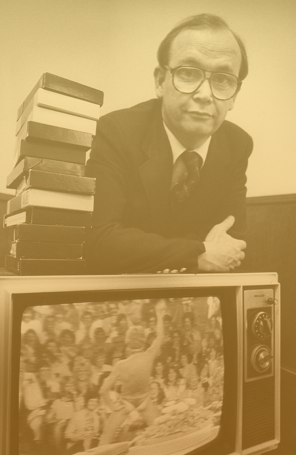God's first mandate and why Christians need to fulfill it
 Read To Me
Read To Me
Sign up for a six month free
trial of The Stand Magazine!
In January 2024, EveryLife (everylife.com), a diaper company driven by Christian principles, launched a provocative ad campaign right in the heart of New York City. Overlooking 50th Avenue and Broadway Street, in the middle of Times Square, were two digital billboards – one emblazoned with a tweet from Elon Musk: “Having children is saving the world.” The words on the second billboard echoed Musk’s sentiment: “Make more babies.”
Sarah Gabel Seifert, founder and president of EveryLife, explained how she and her company took Musk’s tweet and ran with it because they believe his words are true.
“We wanted to prop up that message with a simple statement of ‘make more babies,’ because our population rates are declining,” Seifert explained on a 2024 episode of Hannah’s Heart, which airs weekly on AFR.
According to the Institute for Health Metrics and Evaluation, the birth rate needs to be 2.1 children per woman to sustain a population.
Siefert says that our current birth rate of 1.6 reveals that people are choosing not to have children because our society “is teling them that children are not a gift. [Society is] telling them that children are a burden, that children aren’t convenient, that they’re going to steal your joy.”
Both Musk’s tweet and Seifert’s ad campaign bring into focus the situation countries worldwide are facing with dropping fertility rates (the measure of how many children, on average, a woman has during her childbearing years).
The alarm over declining fertility rates surged in 2023, when the British medical journal The Lancet published its report on fertility rates in 204 countries. The data revealed that by 2050, over three-quarters of these countries are projected to have fertility rates too low to sustain their populations over time. Astonishingly, the dire projections indicate that even more of those 204 countries – 97% – will be in the same predicament by 2100.
Changing attitudes
Due to several factors, feelings about having children have changed in recent years. A 2024 Pew Research study found that the number of adults under 50 who say they are unlikely to ever have children increased 10% between 2018 and 2023. Below are some of the major reasons why adults ages 18-49 are not having children:
▶ They just don’t want to (57%).
▶ They want to focus on other things (44%).
▶ They are concerned about the state of the world (38%).
▶ They cannot afford to raise a child (36%).
▶ Only 13% cited infertility or other medical reasons.
In addition to the reasons cited in the Pew study, fears about exceeding the earth’s carrying capacity (the ability of land to support population growth) have existed for centuries. Dr. E. Calvin Beisner, founder, president, and national spokesman for the Cornwall Alliance for the Stewardship of Creation (corn
wallalliance.org), traced some of those concerns as far back as Christian theologian and early church father Tertullian (c. A.D. 160-220).
In A Treatise on the Soul, Tertullian’s essay against the Gnostics, he wrote, “Our numbers are burdensome to the world, which can hardly supply us from its natural elements. … In very deed, pestilence, and famine, and wars, and earthquakes have to be regarded as a remedy for nations, as the means of pruning the luxuriance of the human race.”
“And that was at a time when the total global population was about 200 to 300 million people, not the 8 billion we have now,” Beisner observed.
In modern times, the concern for overpopulation can be traced to 18th-century Presbyterian minister and economist Thomas Robert Malthus and his 1798 essay on population. Beisner said the basic assumption was that population would outstrip the food supply, bringing mass starvation, disease, and death. Malthus’ solution was that out of compassion and love, people should be encouraged to minimize the number of children they would have. These ideas resonated with others in the early part of the industrial revolution, when the mortality rate of children under 5 years old was 50%.
Because of critics like John Stuart Mill, who pointed out that the food supply can grow faster through human intelligence and productivity, Malthus changed his mind in the second edition of his essay on population.
However, “Very few Malthusians, followers of his, ever noticed that. So, Malthusianism remains popular today,” Beisner explained.
According to Dr. Jennifer Roback Morse, founder and president of The Ruth Institute, the influence of Charles Darwin and the subsequent rise of the eugenics movement added an ominous twist to population control.
“People who were followers of Darwin said, ‘What we really need to do is control who reproduces. We have too many of the wrong kind of people,’” Morse explained. “And so, the whole eugenics movement comes about in the late 19th and early 20th century.
“The widespread notion of overpopulation, along with the population control movement and its predictions of impending disaster, came into full bloom in the late 1950s and early 1960s,” Morse added. “John D. Rockefeller III formed the Population Council and applied massive amounts of private money to convince the public that reducing the population was the only way to avoid worldwide tragedy. The key thing is that people with a lot of money decided that there were too many people in the world and put their money to work to promote that idea privately and influence the actions of governments. These two things together – the old one-two punch of private capital plus influencing public policy – have done a real number on people.”
Morse noted a shift in Rockefeller’s messaging in 1974; it changed from population control to women’s empowerment. By adjusting the message, he could persuade women to willingly change their own behavior.
“If you tell women that what you really need is an education, what you really need is a job, they will voluntarily postpone starting a family,” Morse said of Rockefeller’s strategy. “The term population control creeped everybody out. But as soon as he started talking about women’s empowerment – boom!”
The groundbreaking 1968 publication of The Population Bomb by Paul Ehrlich added more potency to the overpopulation scare.
“It’s actually a formula,” said Beisner. “The formula is I=PAT, where environmental impact is a function of population times affluence times technology. The greater the population, the more the environmental impact. The greater the affluence, the more impact. The greater the technology, the more impact.”
Beisner added, “The worst thing we’re doing to the environment, we’re told today, is climate change. And population growth lies behind all of that. That’s not the main topic of conversation now, but it is what lurks underneath the concerns about climate change that some people, including President Joe Biden, have said is an existential threat to humanity, which is utterly false.”
Both Beisner and Morse agree that the 1930 Lambeth Conference marked a significant shift in the church’s attitude toward children and family planning. For the first time, the Anglican Church stated that artificial contraception was acceptable for its congregation, reflecting a broader acceptance of lower population ideals.
“And guess who was in the background of that convention,” Morse said. “Margaret Sanger [was there] whispering to them, ‘Let it be a Catholic thing. You guys can be modern. You guys can get with it!’”
“Within another roughly 30 years, pretty much all the Protestant churches around the world had followed suit on that, and I see that as a very sad thing,” Beisner added.
Unexpected outcomes
Morse, who holds a Ph.D. in economics, is acutely aware of the implications of an underpopulated world.
“You could look at the public policy level and see we have a Social Security system to take care of old people, and that’s financed by taxpayers,” she said. “So, if the number of taxpayers keeps shrinking, and the number of old people keeps growing, that will not add up.”
She also pointed to practical problems in waiting too long to start a family.
“If you don’t have your first child until age 35, and your mom didn’t have her first child until she was 35, then your mom is 70 years old when she becomes a grandma for the first time. If she waited until she was 40 to have her first child, then she’s going to be in diapers at the same time her grandchildren are in diapers, and the middle kid is going to be stressed out,” Morse reasoned. “You can see what expanding the time between generations is doing to us. It’s a tangible thing that anyone can see for themselves.”
However, according to Beisner, there are surprising benefits that come from an increasing global population: “For every mouth born into the world, there are two hands. Even more important than that, the mind guiding those two hands can cause that person with that one mouth to produce a whole lot more than he consumes in his lifetime.”
The creation mandate
Genesis 1:28 states, “God blessed them; and God said to them, ‘Be fruitful and multiply, and fill the earth, and subdue it; and rule over the fish of the sea and over the birds of the sky and over every living thing that moves on the earth.’”
“That’s a mandate for humanity right from the start,” Beisner said, “and it didn’t disappear because we fell into sin.”
God repeated this admonition in Genesis 9 (following the flood) and again in Psalm 8.
“Psalm 127 doesn’t say children are a punishment from the Lord,” Beisner added. “It says they’re ‘a gift of the Lord, the fruit of the womb is a reward. … Blessed is the man whose quiver is full of them.’
“We should see them this way,” Beisner continued. “Frankly, what I see is that having plenty of children is itself an expression of faith that God has a future for this world and for my family and for the [universal] church, of which I am a part.
“Minimizing our number of children is an expression of the opposite – of unbelief in God’s blessing about these things,” Beisner concluded.
“In generation after generation, the biggest source of church growth has not been evangelism, which we certainly should do, but Christian parents having children and raising them up in the faith and multiplying the church that way,” he explained. “Frankly, if we want to be used to expand the kingdom of God, having children and raising them in the faith is one of the best ways to do that.”
A new generation
The digital billboards placed in Times Square may signal that a new generation is willing to go against the flow after all.
“We’re sounding the alarm in a world where Bill Nye, Al Gore, Bill Gates, and the likes of Paul Ehrlich say the threat of overpopulation looms large, and where social norms encourage women to put off having children until much later in life – if they even have them at all,” Seifert claimed, as she reflected on her bold media campaign. “The greatest threat is a world without children – a world that fails to recognize and cherish the profound beauty and creative potential of the next generation.”

Sign up for a free six-month trial of
The Stand Magazine!
Sign up for free to receive notable blogs delivered to your email weekly.















